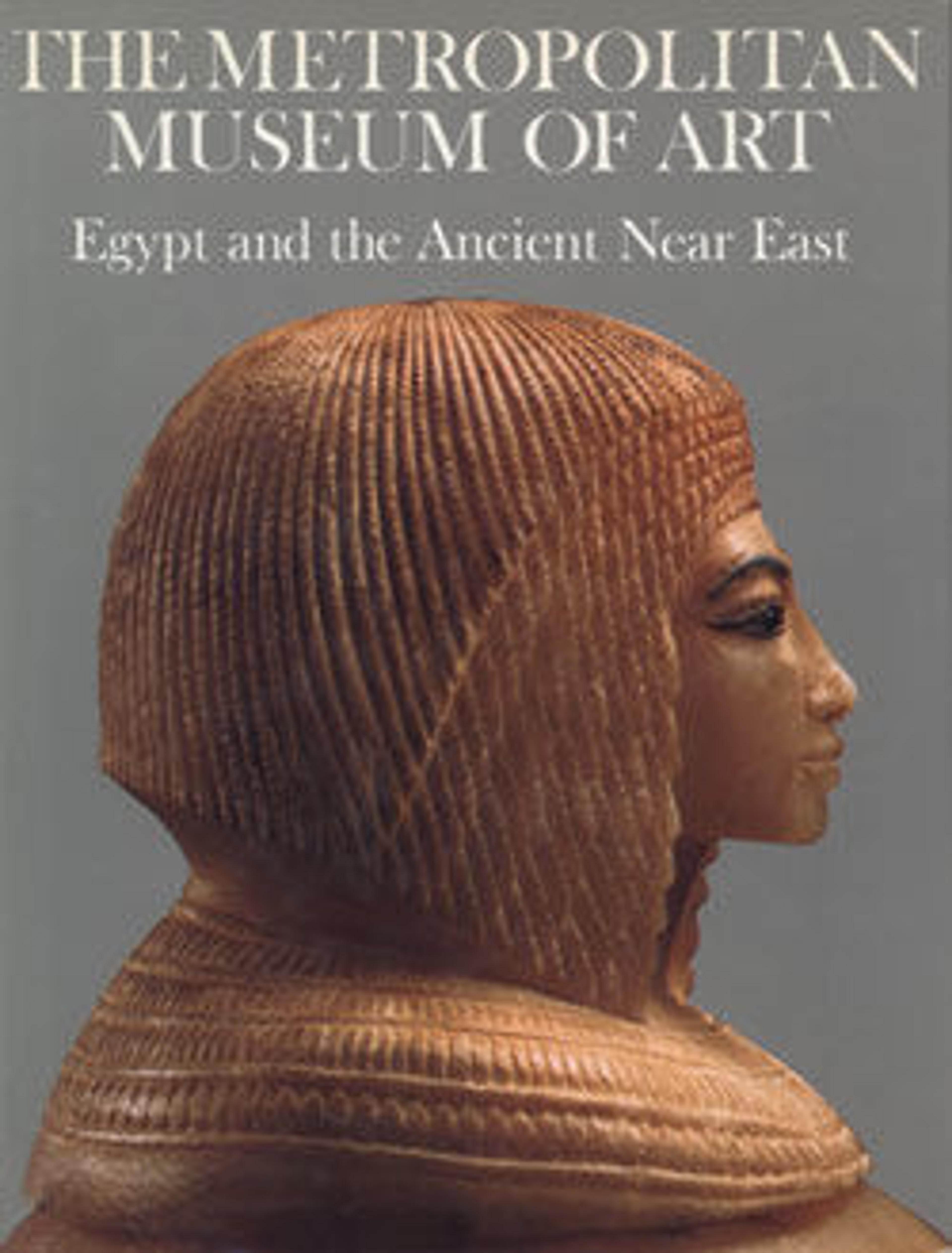Archers
This fragment of relief shows one of the most elaborately composed scenes preserved from the Old Kingdom. A careful examination reveals parts of at least four archers, three standing and one kneeling below them, his extended left arm and the upper part of his head just visible along the lower edge of the fragment. Each man has his left arm stretched in front of him, the left hand grasping the shaft of a long bow with the thumb and last three fingers, while the index finger keeps an arrow steady. With his right hand, each archer draws the string of the bow, with the notch of the arrow set against it. Each man also grasps two extra arrows in his right hand.
The archers wear crossed bands on their chests identifying them as soldiers. The style of the block places it in Dynasty 4, making it the earliest preserved battle scene. It was probably carved during the period spanning the reigns of Khufu, the builder of the Great Pyramid at Giza, and Khafre, builder of the second pyramid. The figures of the archers stand out boldly against the background, and the the features are deeply carved in the well-modeled faces. Unlike most Egyptian scenes showing multiple figures performing the same task, the stance of each individual and the position of each bow is different.
The fragment was excavated by the Museum's Egyptian Expedition during work at the royal cemetery of Lisht, about thirty miles south of Cairo. It had been reused during the building of the pyramid of Amenemhat I, first king of Dynasty 12.
The archers wear crossed bands on their chests identifying them as soldiers. The style of the block places it in Dynasty 4, making it the earliest preserved battle scene. It was probably carved during the period spanning the reigns of Khufu, the builder of the Great Pyramid at Giza, and Khafre, builder of the second pyramid. The figures of the archers stand out boldly against the background, and the the features are deeply carved in the well-modeled faces. Unlike most Egyptian scenes showing multiple figures performing the same task, the stance of each individual and the position of each bow is different.
The fragment was excavated by the Museum's Egyptian Expedition during work at the royal cemetery of Lisht, about thirty miles south of Cairo. It had been reused during the building of the pyramid of Amenemhat I, first king of Dynasty 12.
Artwork Details
- Title:Archers
- Period:Old Kingdom
- Dynasty:Dynasty 4
- Reign:reign of Khufu or Khafre
- Date:ca. 2551–2494 B.C.
- Geography:From Egypt, Memphite Region, Lisht North, Pyramid of Amenemhat I, pyramid core, west side, MMA excavations, 1920–22; Probably originally from Giza
- Medium:Limestone, paint
- Dimensions:H. 25.4 (10 in.); W. 37.5 cm (14 3/4 in.)
- Credit Line:Rogers Fund and Edward S. Harkness Gift, 1922
- Object Number:22.1.23
- Curatorial Department: Egyptian Art
Audio
3240. Group of Archers, Part 1
0:00
0:00
We're sorry, the transcript for this audio track is not available at this time. Please email info@metmuseum.org to request a transcript for this track.
Listen to more about this artwork
More Artwork
Research Resources
The Met provides unparalleled resources for research and welcomes an international community of students and scholars. The Met's Open Access API is where creators and researchers can connect to the The Met collection. Open Access data and public domain images are available for unrestricted commercial and noncommercial use without permission or fee.
To request images under copyright and other restrictions, please use this Image Request form.
Feedback
We continue to research and examine historical and cultural context for objects in The Met collection. If you have comments or questions about this object record, please contact us using the form below. The Museum looks forward to receiving your comments.
